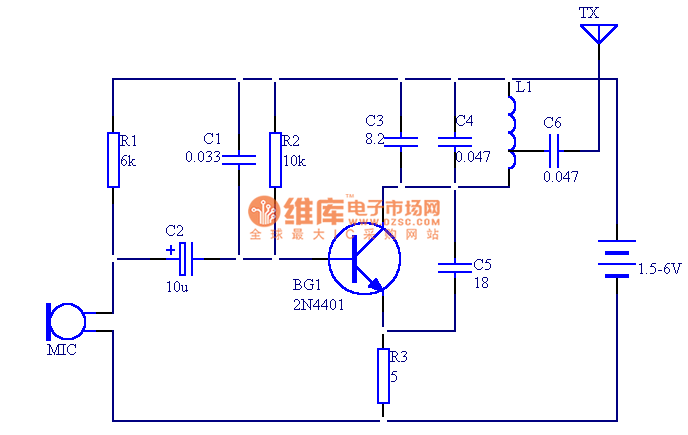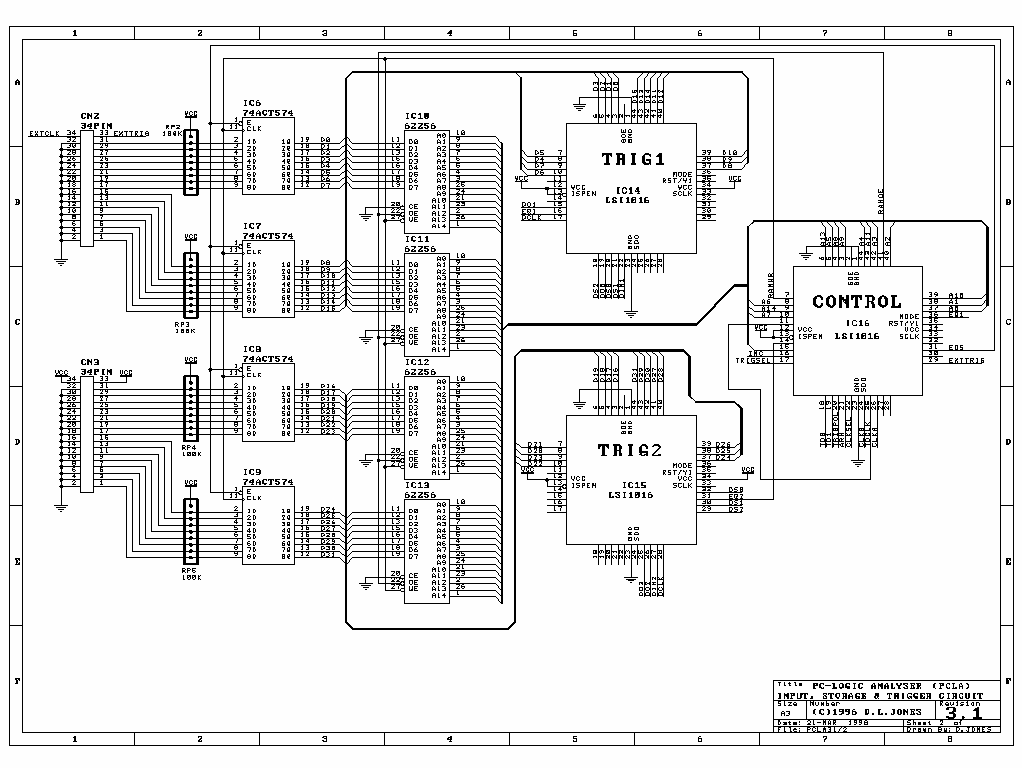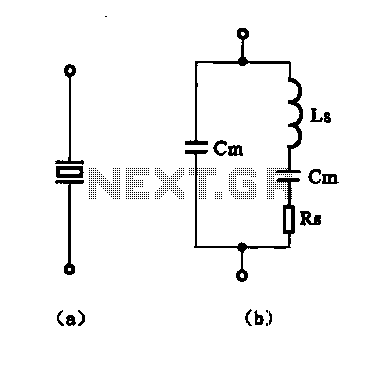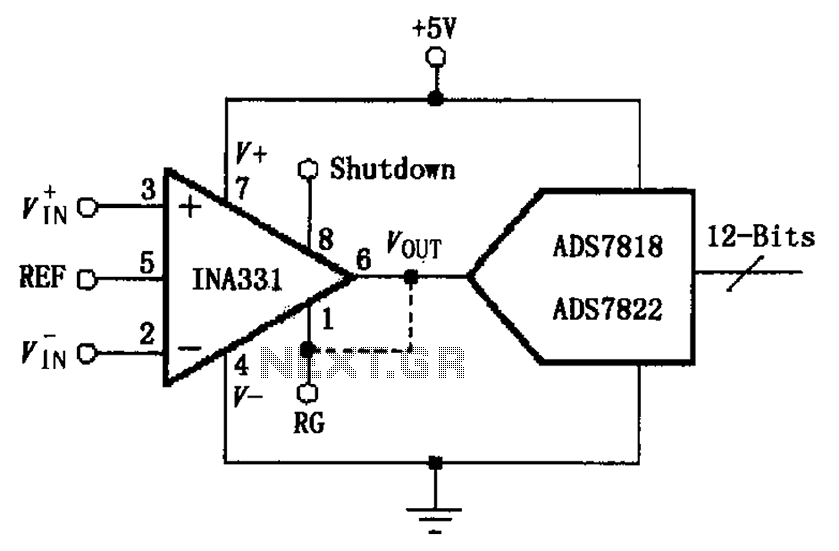
80M And 40M Cw-Ssb Receiver Circuit
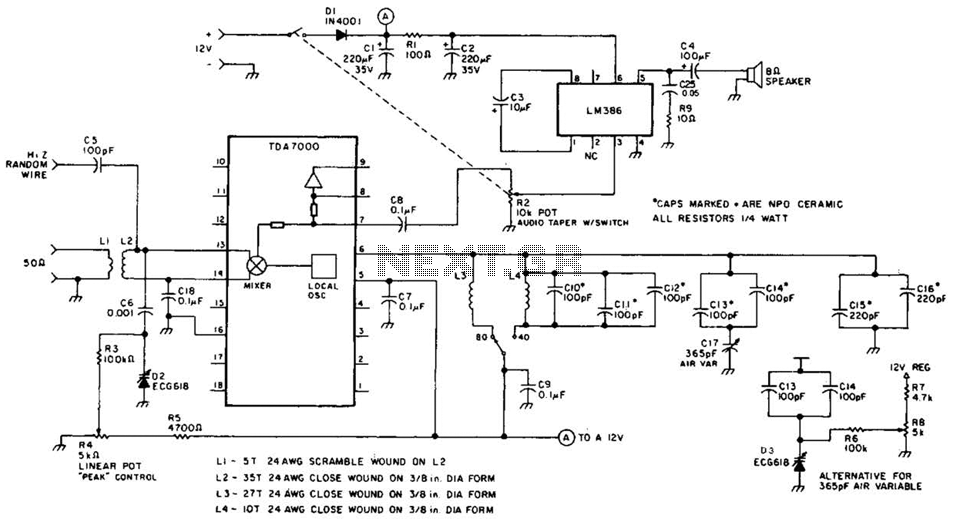
This direct-conversion receiver utilizes a TDA7000 integrated circuit (IC) and incorporates an LM386 audio amplifier. The TDA7000 serves as the mixer and local oscillator (L.O.) section. The frequency control can be achieved using either an air variable capacitor or a varactor diode.
The described direct-conversion receiver is designed to demodulate radio frequency signals and convert them into audio signals suitable for amplification. The TDA7000 IC is a versatile component that integrates both the mixer and local oscillator functions, allowing for efficient signal processing in a compact form factor.
In this configuration, the TDA7000 receives incoming RF signals, which are mixed with a locally generated oscillator signal to produce an intermediate frequency (IF) signal. The local oscillator frequency is crucial for determining the tuning range of the receiver. The choice between an air variable capacitor and a varactor diode for frequency control offers flexibility in tuning methods; the air variable capacitor allows for manual tuning, while the varactor diode can provide electronic tuning capabilities, enhancing the receiver's usability in various applications.
The output from the TDA7000 is fed into the LM386 audio amplifier, which amplifies the demodulated audio signal to a level suitable for driving speakers or headphones. The LM386 is known for its low power consumption and efficiency, making it an ideal choice for battery-operated devices.
Overall, this direct-conversion receiver design is well-suited for applications in amateur radio, portable communication devices, and other electronic projects where compactness and efficiency are paramount. The combination of the TDA7000 and LM386 ensures a reliable and effective solution for receiving and amplifying audio signals from RF sources. This direct-conversion receiver uses a TDA7000 IC and it drives an LM386 audio amplifier. The TDA7000 is used for its mixer and L.O. section. The frequency control can be either with an air variable capacitor or a varactor diode.
The described direct-conversion receiver is designed to demodulate radio frequency signals and convert them into audio signals suitable for amplification. The TDA7000 IC is a versatile component that integrates both the mixer and local oscillator functions, allowing for efficient signal processing in a compact form factor.
In this configuration, the TDA7000 receives incoming RF signals, which are mixed with a locally generated oscillator signal to produce an intermediate frequency (IF) signal. The local oscillator frequency is crucial for determining the tuning range of the receiver. The choice between an air variable capacitor and a varactor diode for frequency control offers flexibility in tuning methods; the air variable capacitor allows for manual tuning, while the varactor diode can provide electronic tuning capabilities, enhancing the receiver's usability in various applications.
The output from the TDA7000 is fed into the LM386 audio amplifier, which amplifies the demodulated audio signal to a level suitable for driving speakers or headphones. The LM386 is known for its low power consumption and efficiency, making it an ideal choice for battery-operated devices.
Overall, this direct-conversion receiver design is well-suited for applications in amateur radio, portable communication devices, and other electronic projects where compactness and efficiency are paramount. The combination of the TDA7000 and LM386 ensures a reliable and effective solution for receiving and amplifying audio signals from RF sources. This direct-conversion receiver uses a TDA7000 IC and it drives an LM386 audio amplifier. The TDA7000 is used for its mixer and L.O. section. The frequency control can be either with an air variable capacitor or a varactor diode.

